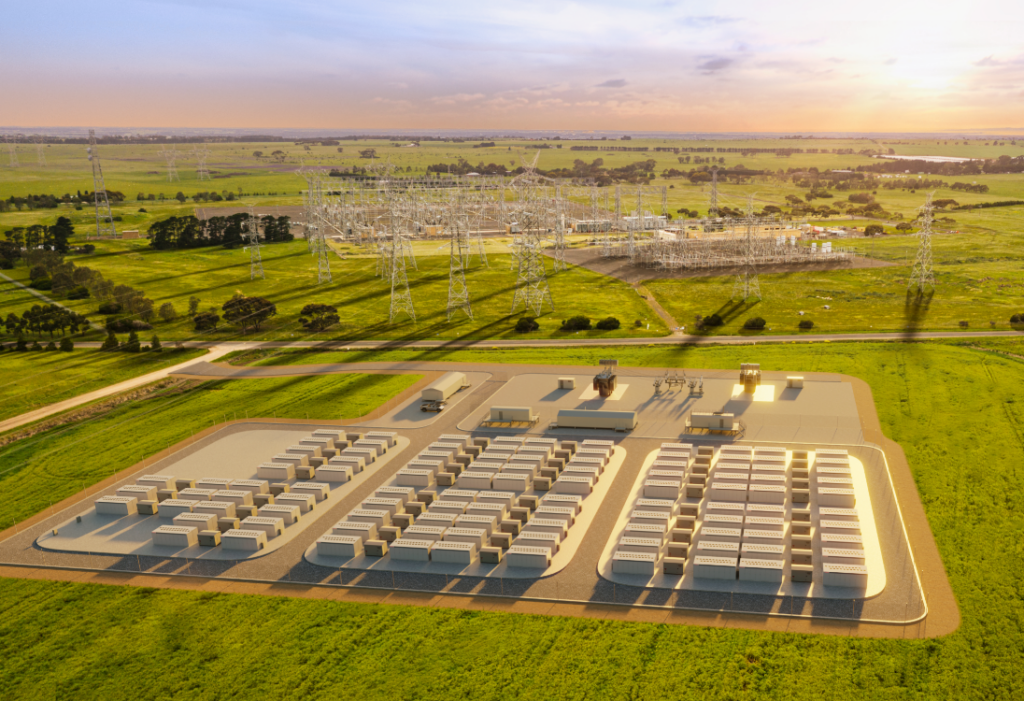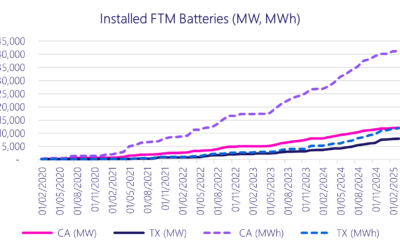
Red tape, costs and logistical hurdles for large-scale battery storage and hybrid systems to participate in Australia’s National Electricity Market (NEM) will be cut under new Australian Energy Market Commission (AEMC) rules.
Issued today after a process of deliberation and consultation, AEMC said the final determination rule is designed to make it easier and more attractive for battery storage and hybrids — systems that combine more than one energy resource at a single grid connection point — to enter the market.
Enjoy 12 months of exclusive analysis
- Regular insight and analysis of the industry’s biggest developments
- In-depth interviews with the industry’s leading figures
- Annual digital subscription to the PV Tech Power journal
- Discounts on Solar Media’s portfolio of events, in-person and virtual
However, some concerns held by the industry appear to remain, mainly over the fact that energy storage has not been exempted from paying network charges for using the grid.
Trade group the Clean Energy Council issued a statement today arguing that the new rules place energy storage — including pumped hydro as well as batteries — at a disadvantage to coal and gas.
Clean Energy Council director of energy transformation Christian Zuur said that the new rule includes some positive changes for storage.
Nonetheless, the renewable energy industry was disappointed that a proposal to exempt pumped hydro and batteries from paying networks charges, a proposal made by the Australian Energy Market Operator (AEMO), was rejected, he said.
“Batteries and pumped hydro will now be placed at a commercial disadvantage to coal and gas generators, who do not face network charges. This undermines the efforts of state and territory governments to decarbonise the power system,” Zuur said.
Network charges: What the AEMC said
The AEMC argued that it did not want to “move the goal posts” on network charges at this time. The existing framework which allows large-scale grid-connected energy storage to choose between connecting under a negotiated agreement of the prescribed service remains in place.
“Energy storage participants will continue to negotiate their transmission services and charges. Our intention is for existing network agreements to remain unchanged. So, for example if storage is currently paying zero charges, the intention is that should continue to be the case,” AEMC chair Anna Collyer said.
“We know some stakeholders supported an exemption from network charges for storage. An important part of our final decision is that we are not suggesting that storage should automatically be paying network charges. And we agree the rules on prescribed transmission services are not designed for price responsive loads.”
Collyer added that reforms to network charges for price responsive load involves other, broader, issues that need to be considered which will affect all kinds of assets, not just energy storage. The AEMC chair suggested this will remain a work in progress and that the commission would prioritise a rule change request from stakeholders.
“Network price signals should be considered as the energy market transitions to more price responsive load and to a more dynamic environment,” Collyer said.
The Clean Energy Council’s Christian Zuur said the group was “pleased to see that the AEMC has made a few changes to help address some of the concerns raised by industry, such as trying to exclude existing storage units from facing new charges and stating that all new negotiated charges must be consistent across existing and new storage providers.”
“However, the devil will be in the application, and we will be observing how the network businesses apply these rules in practice,” he said.
Moves to incentivise large and small-scale storage
A new single category for registration and participation in the NEM has been created to cover battery storage and hybrid systems, the Integrated Resource Provider (IRP), which AEMC claimed would make it easier to enter the market for providers of energy storage or a combination of energy services.
IRP aggregators will be able to provide market services from generation and load.
“For large batteries the rule will cut red tape, reduce costs and logistical hurdles to participate in the market,” Collyer said.
“Batteries will no longer need to register twice, to both draw energy from the grid and send it out, as they currently do.”
Small and commercial-scale battery storage will also be able to participate in the market more easily through aggregation agreements. Residential, commercial and industrial (C&I) customers will be able to sign up with aggregator businesses that will pay them for adding their stored energy to join virtual power plant (VPP) networks.
Currently, Australia is home to several VPP trials of varying sizes, mostly from retail energy provider programmes. AEMC chair Anna Collyer said the broadening of access to this type of service will unlock revenues which will improve the payback times of battery systems and lead to more competition and innovation in the market.
The new rules also allow hybrid systems to be used to store and self-consume power generated behind the system’s grid connection point. In other words, if a manufacturing facility had a solar power plant, previously the energy generated had to go to the grid or be lost.
If there is congestion on the network and the load is scheduled, instead of constraining the solar farm, the manufacturing facility can use the solar to power its own operations.
“What this means is that the operator is not exposed to the spot market price to purchase energy from the grid and the energy being created by the solar plant is not being wasted. Some stakeholders have told us this could reduce their energy costs by around 15%,” Collyer said.
Rule changes come at important time
Australia’s population and businesses are adopting renewable energy quickly, despite a clear reluctance from central government to commit to strong decarbonisation policies.
A more recent growth in large-scale and distributed battery storage uptake has been seen, but investment has been relatively slow to mobilise. While batteries can earn good revenues from the Frequency Control Ancillary Services (FCAS) market for grid services and some from arbitrate, the merchant nature of these income streams has been noted as an obstacle for financing.
Large generation and retail companies, conglomerates with big balance sheets and some state government-owned entities have dominated the investment in large batteries in particular.
However, this appears to be changing as the market matures, with work begun on Australia’s largest privately-funded battery, a 150MW system funded by ENGIE and Macquarie’s Green Investment Group, reported on this week by Energy-Storage.news.
Another recent rule change to introduce Five-Minute Settlement (5MS) into the NEM, in place since October this year, has been hailed as a likely game changer, while new markets for grid services including Fast Frequency Response are on their way.






